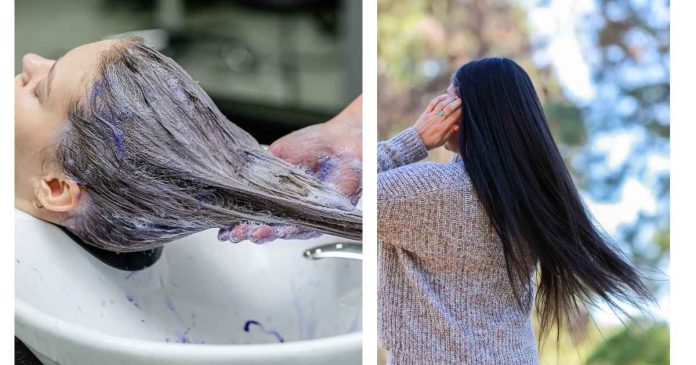Bleaching black hair is a popular way to achieve lighter, more vibrant colors, but the process can produce striking results that vary based on the hair’s texture, original color, and how long the bleach is left in. If you’re considering going blonde or even experimenting with colors like pastel shades or silver, understanding what bleached black hair looks like can help you prepare for the transformation.
In this article, we’ll explore the effects of bleaching black hair, how the process works, and what you can expect in terms of both color and texture.
What Happens When You Bleach Black Hair?
When you bleach your hair, the chemical process lifts the natural pigment (melanin) from the hair shaft. Black hair contains a high amount of eumelanin, the pigment responsible for dark colors. Because of this, black hair is more resistant to bleaching than lighter hair, and the process may take longer to achieve the desired result.
Here’s a general outline of the steps involved:
- Lightening Process: Black hair typically goes through several stages when being bleached. Initially, it will lighten to a red or orange hue before eventually turning yellow or pale blonde if enough bleach is applied. Depending on your hair’s health, you may need more than one session to achieve a platinum blonde look.
- Results by Stage:
- Stage 1: After bleaching, the hair may appear red, copper, or orange. This is the first stage of lifting the color, and the hair still contains a lot of pigment.
- Stage 2: As the bleaching process continues, the hair turns more yellow or golden blonde. At this stage, it’s still not light enough for very light or platinum blonde shades.
- Stage 3: For platinum blonde or pastel colors, additional bleaching and toning may be necessary to remove the yellow or brassiness, leaving the hair closer to a pale blonde shade.
What Does Bleached Black Hair Look Like?
Bleaching black hair can produce a variety of results depending on how light you want to go, the type of bleach used, and how healthy your hair is before starting. Here are some common outcomes you might see after bleaching black hair:
1. Brassy, Yellow, or Orange Undertones
In many cases, bleached black hair will develop warm, brassy undertones, especially if the bleach wasn’t left on long enough to lift the hair fully. This is particularly common in the early stages of the process, where you might see orange or yellow hues instead of a true blonde.
- How to Fix It: Toning treatments can help neutralize brassy or yellow undertones by using purple or blue shampoos or conditioners to tone down the warmth. Some people use a toner after bleaching to achieve a more neutral blonde shade.
2. Platinum Blonde or Ash Blonde
With more careful bleaching and possibly multiple sessions, black hair can be lightened to a platinum blonde or ash blonde color. This requires lifting the hair all the way through the red and yellow stages, which may involve using a higher volume of developer or a stronger bleach formula.
- What It Looks Like: The result is often a very cool-toned, almost silvery blonde, which can be striking and bold. Platinum blonde can look stark against darker skin tones but also creates a high-fashion, edgy aesthetic.
3. Pastel or Silver Tones
Once black hair has been lightened to a very pale blonde, it can be customized with a variety of pastel colors or silver shades. If you are aiming for a pastel pink, lavender, or mint green, these shades will typically need to be applied over a very pale blonde or white base.
- What It Looks Like: After bleaching to a very light stage, pastel colors can be vibrant and stunning, creating a playful, whimsical, or even futuristic look. Silver or gray tones, however, often require a special toner or dye that neutralizes any yellow or warm undertones left from the bleaching process.
4. Damage and Texture Changes
Bleaching is a chemical process that can affect the texture and health of your hair. Black hair is often thicker and coarser than lighter hair types, and it can be more susceptible to breakage or dryness when bleached. After bleaching, the hair may look drier, more porous, and frizzier than before.
- What It Looks Like: The texture might feel rougher to the touch, and hair may lose its natural shine or look uneven in texture. This is particularly noticeable in the earlier stages of bleaching, where the hair has not yet been conditioned or treated.
- How to Fix It: Deep conditioning treatments, hair masks, and leave-in conditioners can help restore moisture and improve the overall health of the hair. Regular trims are also recommended to prevent split ends and breakage.



